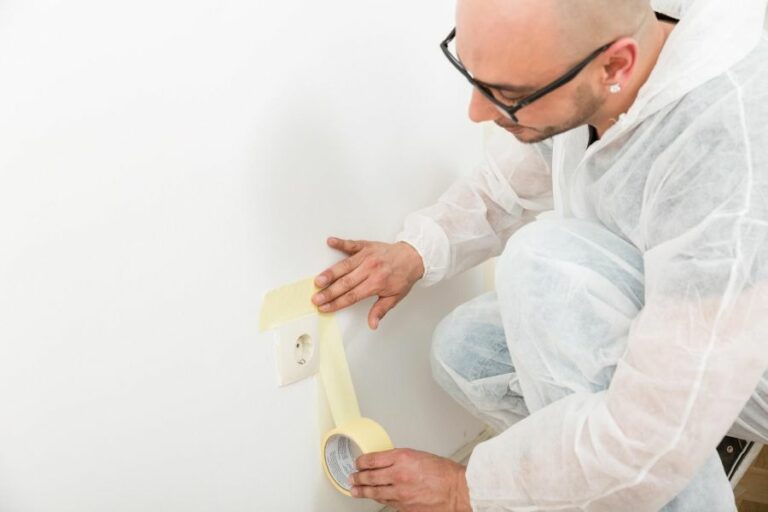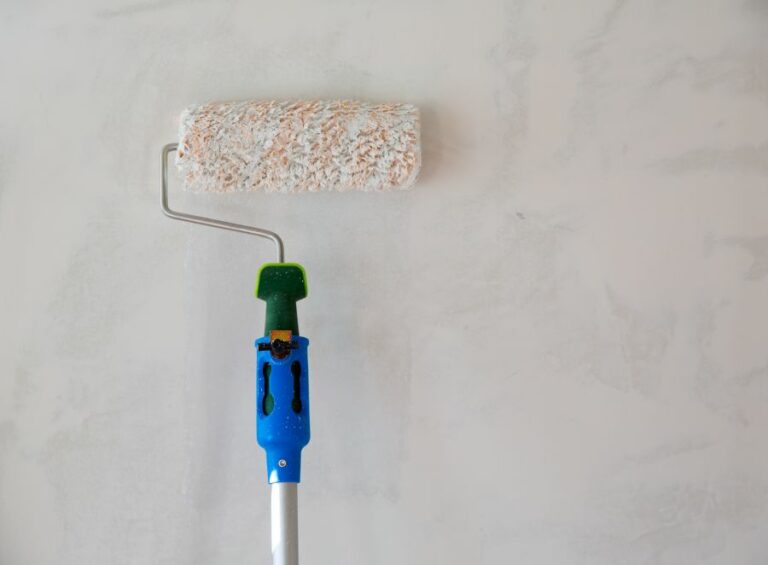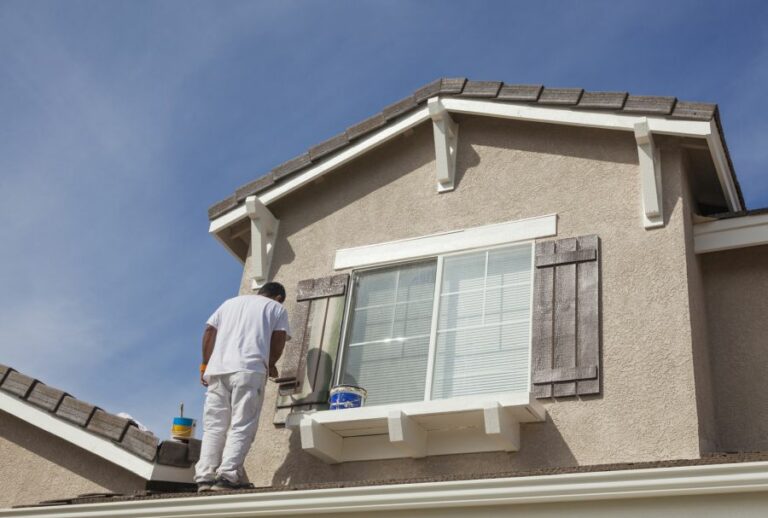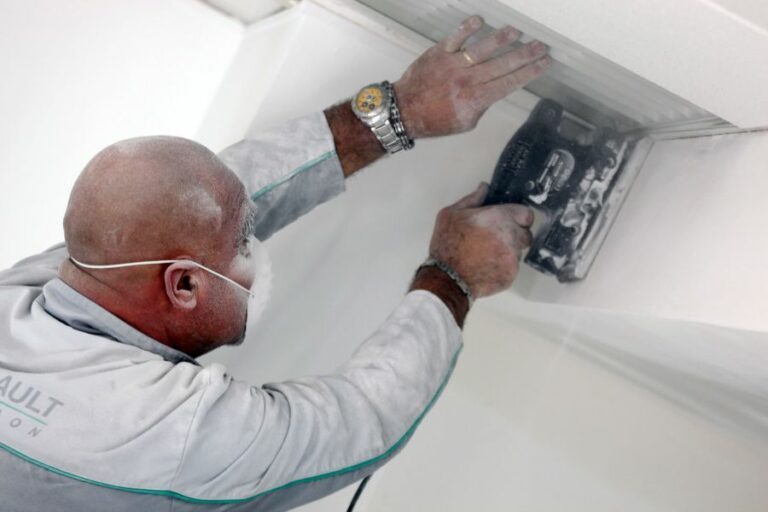Overcoming Surface Prep In Historic Structures
Restoring and preserving historic structures can be a challenging endeavor, particularly when it comes to surface preparation. As experts in the field, we understand the complexities that come with the task and the need to incorporate modern solutions with the utmost respect for the original architecture. Our knowledge and experience will ensure that we have the right answers to help you navigate the intricate process of overcoming surface prep in these invaluable pieces of our history.
Overcoming surface prep in historic structures:
To overcome surface preparation challenges in historic structures, it is crucial to understand the original construction materials and techniques, choose appropriate cleaning methods, and prioritize safety and environmental considerations. Proper surface preparation is essential for long-lasting restoration and preservation outcomes, ensuring cultural heritage and architectural conservation enhancement and protection.

Discover how to tackle surface preparation in historic buildings while preserving their integrity and unique features. We’ll unveil the challenges and effective techniques for a successful restoration. Read on and learn the secrets of proper surface prep in these treasured structures!
Contents
- 1 Surmounting Surface Preparation Challenges in Historic Buildings
- 2 The Four Strategies for Safeguarding Our Historical Heritage
- 3 Crucial Considerations for Historic Building Renovations
- 3.1 • Understand the Building’s Significance and Architecture
- 3.2 • Determine the Scope and Goals of the Renovation
- 3.3 • Comply With Regulations and Local Guidelines
- 3.4 • Assemble the Right Team of Professionals
- 3.5 • Preserving Historic Features and Materials
- 3.6 • Ensuring Safety and Structural Integrity
- 3.7 • Incorporating Modern Amenities and Energy Efficiency
- 3.8 • Final Thoughts
- 4 Methods Employed in Preserving Historical Structures
- 5 Historic Building Adaptation: Transforming for Compatible Uses
Surmounting Surface Preparation Challenges in Historic Buildings
Preserving historic structures is an essential aspect of cultural heritage as well as architectural conservation. When undertaking restoration or preservation work, surface preparation is critical in ensuring successful, long-lasting outcomes.
• Importance of Surface Preparation
Surface preparation is the crucial first step in any restoration project. It involves the removal of existing coatings, contaminants, and debris, followed by the application of new, compatible coatings or treatments.
Effective surface prep enhances the performance and lifespan of the new materials and provides a sound, stable substrate for subsequent finishes or interventions.
Weak surface preparation may lead to failures in the new finishes, reduced durability, or even further deterioration of the historic fabric.
Therefore, it is essential to approach surface prep with an informed strategy and the right techniques to ensure the preservation and enhancement of the historic structure.
• Knowing the Materials and Techniques
Among the most critical aspects of proper surface, preparation is understanding the original construction materials and techniques used in the historical structure. It is essential to identify and assess these materials to determine the appropriate cleaning, consolidation, and repair methods.
Common materials in historic structures include:
- Stone
- Brick
- Wood
- Plaster
- Metal
For example, if the structure features a historic brick facade, particular attention should be paid to the type of mortar and brick and their current condition. This information will help guide the selection of suitable cleaning and repointing methods.
• Choosing the Proper Cleaning Method
A wide array of cleaning methods exists, each with its advantages and drawbacks. The choice of cleaning method must be based on the substrate’s nature, the specific contaminants or coatings present, and the desired outcome for the historic structure.
The cleaning method should effectively remove residue or contaminants without damaging the historic fabric.
– Mechanical Cleaning
Mechanical cleaning employs different tools and equipment to physically remove contaminants from surfaces. This method can range from the use of brushes, scrapers, and abrasive pads to specialized machinery such as micro-abrasive blasting.
While mechanical methods can be effective, care should be taken to avoid damaging the historic fabric, especially when working with softer or more friable materials. In general, start with gentle techniques and progressively increase the level of force if required.
– Chemical Cleaning
Chemical cleaning relies on the use of solvents and other agents to dissolve or break down undesirable materials on the surface. Chemicals such as water, detergents, or specialized solvents can be utilized to target specific contaminants effectively.
It is crucial to select the appropriate chemical agent for the materials in question, ensuring compatibility and effectiveness. Always test chemical cleaners on a small, inconspicuous area before proceeding with the entire project.
– Laser Cleaning
Laser cleaning, a cutting-edge technology, has emerged as an alternative to traditional methods in specific applications. This technique involves using a low-power laser to ablate or vaporize contaminants from the surface without physical contact or chemical residues.
While laser cleaning holds promise for some applications, the technology is not widely accessible and may not be suitable for all historic structures. Consult with preservation experts or experienced practitioners before considering this method.
• Safety and Environmental Considerations
As with any construction or preservation project, safety is a crucial concern during surface preparation. Provide proper personal protective equipment (PPE) such as gloves, eye protection, and respiratory protection for workers.
Additionally, follow local regulations and guidelines regarding the use of chemicals or equipment to ensure environmental compliance.
• In Conclusion
Approaching surface preparation with knowledge and consideration for the unique challenges of historic structures is essential for successful preservation projects.
By understanding the materials, techniques, and potential pitfalls, you can ensure that your restoration work effectively preserves and enhances the historic fabric for generations to come.
Remember to consult with experts, collaborate with experienced professionals in the field, and always consider safety and environmental factors in your restoration efforts.
The Four Strategies for Safeguarding Our Historical Heritage
Historic preservation is a crucial aspect of conserving our cultural heritage and ensuring that future generations can appreciate and learn from the architectural and historical resources of the past.
There are four main approaches to historic preservation that aim to effectively protect and preserve the historical integrity of buildings, districts, and structures. These approaches are:
- Preservation
- Rehabilitation
- Restoration
- Reconstruction
• Preservation: Retaining the Authenticity
Preservation involves maintaining the existing condition of the historical property by providing stabilization and protection. This approach aims to halt further deterioration and retain the authenticity of the historic building or structure.
In preservation, the primary goal is to prevent damage or decay, which can often be done through regular maintenance efforts such as cleaning, repainting, or repairing small damages before they worsen.
Additionally, protective measures may be taken to shield the building from the elements, such as installing roofing, gutters, or storm windows.
The preservation approach is best suited for buildings with significant historical value, where retaining the original materials, features, and finishes is of utmost importance.
• Rehabilitation: Adapting to Modern Needs
Rehabilitation focuses on adapting a historic building to meet contemporary needs while preserving its historic character. This approach involves making alterations and additions to the building while preserving its most important historic features, materials, and spaces.
Rehabilitation projects might include updating mechanical systems, retrofitting for energy efficiency, providing accessibility improvements, or introducing new functions to the building, such as converting a historic factory into residential units.
A rehabilitation approach is an excellent option when a historic building requires significant modifications to meet the demands of modern use but must retain its architectural and historical character.
The Secretary of the Interior’s Standards for Rehabilitation is a valuable resource for guiding projects through this approach.
• Restoration: Returning to a Specific Time
Restoration involves returning a historic building to its appearance during a specific time in its history while preserving the structure’s original materials and architectural features. This approach requires meticulous research to accurately recreate the chosen historical period.
Restoration projects may include the removal of later additions or alterations that are not consistent with the chosen time period and the recreation of missing or damaged historic features using traditional methods and materials.
It is crucial to keep documentation and records of all research and decisions made during a restoration project for future reference.
Restoration is particularly appropriate for buildings or sites with significant historical or architectural importance related to a specific period. It can also be a fitting approach for commemorative or educational purposes.
The Restoration Guidelines provided by the National Park Service can help navigate the complexities of restoration projects.
• Reconstruction: Rebuilding the Past
Reconstruction involves recreating a non-surviving historic building or structure, either partially or fully, based on physical and documentary evidence. This approach aims to reproduce the appearance of the original building as accurately as possible while using new materials.
Reconstructions may be necessary in cases where a historic building has been severely damaged or destroyed, and it is crucial to restore its presence for interpretive, educational, or commemorative purposes.
In such cases, reconstruction should be based on detailed historical documentation, archaeological research, and archival evidence.
Since reconstruction is the most complex and resource-intensive approach to historic preservation, it is only recommended when other preservation methods are not sufficient and there is a clear and compelling rationale for recreating the lost building or structure.
The Reconstruction Standards provided by the National Park Service define the best practices for this approach.
• Conclusion
The four approaches to historic preservation each offer unique methods and goals for protecting our architectural and cultural heritage. The choice of approach depends on the specific circumstances, historical significance, and desired outcome of the preservation project.
By understanding the key principles of preservation, rehabilitation, restoration, and reconstruction, we can ensure the responsible care and management of historic properties for generations to come.
Four Approaches to Historic Preservation
No. | Strategies for Safeguarding Our Historical Heritage |
|---|---|
1 | Preservation |
2 | Rehabilitation |
3 | Restoration |
4 | Reconstruction |
Crucial Considerations for Historic Building Renovations
Renovating historic buildings requires a delicate balance between preserving the architectural and historical significance while addressing the safety and efficiency demands of a modern structure.
• Understand the Building’s Significance and Architecture
Before embarking on a renovation project, it’s crucial to research and understand the historical and architectural significance of the building.
This can include identifying the building’s historical context, architectural style, materials used in its original construction, and any significant features that need special attention during the renovation.
The National Park Service offers guidelines and resources that can provide valuable information on understanding the significance of historic properties.
Additionally, consulting with local historians, architectural experts, or official governing bodies can help paint a clearer picture of the building’s context and importance.
• Determine the Scope and Goals of the Renovation
Establishing clear renovation goals forms a solid foundation for a successful historic building renovation. This involves determining the space’s intended purpose (e.g., residential, commercial, or public use) and identifying the structural and functional needs that must be addressed.
Creating a thorough wishlist of the desired changes and updates, ranging from essential repairs to cosmetic upgrades, helps establish priorities and budgets. Consultation with construction professionals, architects, and historians can provide insight into the feasibility of the proposed changes.
• Comply With Regulations and Local Guidelines
Renovating historic buildings typically involves navigating various regulations and guidelines that aim to preserve the building’s heritage. These may be local, state, or federal regulations and can involve navigating permits, inspections, and construction standards.
Becoming familiar with the specific laws governing historic preservation in your area, such as zoning ordinances and building codes is essential. Proactively involving government officials and historic preservation boards in your project planning can help ensure compliance with relevant regulations.
• Assemble the Right Team of Professionals
Collaborating with experienced professionals who specialize in historic building renovation is invaluable to the project’s success. Specialists like architects, engineers, and builders with a track record in historic preservation can provide expert guidance and recommendations.
Exploring local professional resources and seeking referrals can help identify a trustworthy and knowledgeable team.
Additionally, hiring a historic preservation consultant can be a valuable asset in navigating the complexities of the renovation process. A consultant can provide advice on budgeting, project scheduling, and meeting historic preservation requirements.
• Preserving Historic Features and Materials
Striking a balance between modernization and preservation is a key consideration in historic building renovation. Identifying and maintaining significant architectural features is essential, ensuring they are not compromised during the renovation process.
Examples of such features include original woodwork, moldings, windows, and masonry work.
Preserving historic materials requires a careful approach to repairs and restoration. The focus should be on maintaining the original materials whenever possible and only replacing them when they are beyond repair.
When original materials need to be replaced, aim to find appropriate substitutes that maintain the integrity of the building’s appearance and character.
• Ensuring Safety and Structural Integrity
Updating a historic building’s safety features and structural stability is a critical aspect of the renovation process. This may involve reinforcing or repairing the building’s structural elements, including walls, beams, and foundations, as well as addressing potential hazards like asbestos or lead paint.
Integrating modern safety features, such as fire suppression systems and electrical upgrades, should be done in a discreet manner that preserves the building’s aesthetic.
Consult with safety and structural engineering experts to explore creative solutions that meet the building’s functional needs without compromising its historic character.
• Incorporating Modern Amenities and Energy Efficiency
While maintaining the historical integrity of the building, it is also important to consider the integration of modern amenities and energy-efficient systems.
This may involve updating mechanical systems, such as heating, ventilation, and air conditioning, and incorporating technologies like smart home automation and energy-efficient lighting.
Working with experienced professionals who understand the importance of preservation can result in innovative and successful solutions for incorporating modern updates while retaining the historic fabric of the building.
When selecting materials and products, prioritize solutions that offer both efficiency and aesthetic compatibility.
• Final Thoughts
Renovating a historic building is a complex and challenging endeavor, requiring a well-considered approach that balances preservation, safety, and modern functionality.
By gaining a comprehensive understanding of the building’s significance and architecture, assembling a strong team of experts, and keeping preservation principles at the forefront, a successful renovation can ultimately provide the best of both worlds: a beautiful historic building enhanced for modern living.
Factor | Description |
|---|---|
Historic Preservation Guidelines | Follow the guidelines and regulations set by the local, state, or national historic preservation authorities. |
Structural Integrity | Assess and address any structural issues, such as foundation problems, water damage, and load-bearing capacity before renovation begins. |
Original Materials and Architectural Features | Preserve and restore original materials and architectural features, such as woodwork, plasterwork, tiles, and stained glass, as much as possible. |
Historical Significance | Research and respect the building’s history and significance to the community to maintain its historic integrity and authenticity. |
Functionality | Consider modern-day use and functionality when planning the renovation, ensuring the building meets accessibility, safety, and energy efficiency standards. |
Skilled Professionals | Work with professionals experienced with historic building renovations, such as architects, engineers, and contractors specializing in preservation and restoration. |
Financial Resources | Identify funding sources, such as grants or incentives, to help finance the renovation, and be prepared for unexpected costs associated with restoring a historic building. |
Methods Employed in Preserving Historical Structures
Historic preservation is the practice of protecting, conserving, and maintaining sites of cultural, historical, or natural significance. It is essential in preserving our heritage and ensuring that future generations can appreciate and learn from the past.
• Planning and Documentation
– Assessment and Survey
Before undertaking any preservation project, it is crucial to conduct an initial assessment and survey of the property to determine its historical value and the necessary preservation measures.
– Preservation Plan
A well-structured preservation plan becomes the roadmap for the entire preservation process. This plan will set out the long-term objectives and guidelines, analyze the property’s condition, and prioritize actions to meet preservation goals.
– Historic Structure Report
A historic structure report documents the property’s architectural history, alterations, and present condition while providing recommendations for its future treatment. It serves as a valuable reference for making informed decisions during the preservation process.
• Architectural Conservation
– Restoration
Restoration aims to return a historic property to its original appearance at a particular point in time, using traditional materials, techniques, and design. It often requires careful research and documentation to ensure the authenticity of the restored elements.
– Rehabilitation
Rehabilitation enables the adaptive reuse of historic properties for modern purposes. It integrates new materials and technologies while respecting the building’s historic character.
In my experience, rehabilitation projects can be a successful way to give new life to a historically significant building.
– Preservation
Preservation focuses on the maintenance and repair of a historic property’s existing materials and features. This technique aims to prevent further deterioration and extend the life of the building while retaining its historical integrity.
– Reconstruction
Reconstruction involves recreating a lost or severely damaged historic building using carefully researched plans, materials, and techniques. This approach should only be considered when sufficient documentation and evidence are available to ensure accuracy and authenticity.
• Structural Stabilization and Repair
– Stabilization
Stabilizing a historic property involves addressing safety concerns and preventing further deterioration. This may involve repairing damaged structural elements, reinforcing weakened areas, or installing temporary bracing to ensure the building’s stability during the preservation process.
– Repair and Replacement
Repairing and replacing damaged or deteriorated materials is crucial in preserving historic property. Always consider replacing materials with historically appropriate options, and consult with preservation professionals for guidance.
• Energy Efficiency and Sustainability
– Weatherization
In my experience, improving a historic property’s energy efficiency should not compromise its historic character. Insulation, weather-stripping, caulking, and storm window installation are all ways to enhance energy efficiency without jeopardizing the building’s integrity.
– Retrofitting and Green Technologies
Retrofitting historic properties with clean energy technologies, such as solar panels, can have a minimal visual impact on the building’s appearance while providing economic and environmental benefits.
• Archaeological Site Preservation
– Excavation and Recording
When dealing with archaeological sites, it is important to conduct excavations responsibly, adhere to archaeological standards, and maintain detailed records of the site’s layout, features, and artifacts.
– Site Protection
Preserving and protecting archaeological sites often involves preventing deterioration caused by natural processes or human activity. Techniques like vegetation control, drainage improvements, and the installation of protective covers may be used to defend sites from damage.
– Monitoring and Maintenance
Regular site monitoring and maintenance ensure the ongoing preservation of archaeological sites. This may involve periodic inspections, documentation updates, and repair work when necessary.
• Public Education and Outreach
– Interpretation and Interpretive Signage
Effective interpretation allows visitors to appreciate and understand the historical significance of a site. Interpretive signage, tours, or educational programs can all enhance the visitor experience, fostering a greater appreciation for historic preservation efforts.
– Community Engagement
Involving the local community in historic preservation efforts can foster a sense of ownership and pride, encouraging continued preservation and maintenance. Initiatives like workshops, volunteer opportunities, or collaborative projects can help engage the public in the preservation process.
In conclusion, historic preservation requires a range of techniques, each tailored to unique circumstances and objectives.
By utilizing appropriate planning, documentation, conservation methods, and public engagement strategies, we can effectively protect and preserve our rich cultural heritage for future generations to enjoy and learn from.
Technique | Description |
|---|---|
Documentation | Recording the history, architectural features, and cultural significance of a building or site through written, photographic, and/or drawn methods. |
Preservation | Maintaining the existing materials, structures, and features of a historic property to prevent further deterioration, damage or loss. |
Rehabilitation | Adapting a historic property for modern use while preserving its significant historical features and characteristics. |
Restoration | Returning a historic property to its appearance at a specific period in time, based on accurate historical research and documentation, using traditional materials and techniques. |
Reconstruction | Recreating a historic property or feature that no longer exists, based on accurate historical research and documentation, using traditional materials and techniques. |
Historic Building Adaptation: Transforming for Compatible Uses
Preserving and adapting historic buildings is important in maintaining the cultural and historical significance of a place while also giving new life to these structures.
Among various approaches, one stands out for successfully renovating historic buildings for other compatible uses: adaptive reuse. This method allows historic buildings to be repurposed, ensuring both their preservation and their continued functionality.
• Understanding Adaptive Reuse
Adaptive reuse is a strategy that seeks to preserve the most significant elements of a historic building while adapting it for a new purpose. This approach allows the structure to retain its historical value and architectural integrity while making it suitable for contemporary needs.
Some examples of adaptive reuse include converting industrial buildings into residential lofts, repurposing churches into community centers, or transforming old schools into offices.
– Components of Adaptive Reuse
Successful adaptive reuse projects usually involve the following key components:
- Preserving Historical Character: Any interventions or alterations should respect and maintain the original character of the building.
- Compatibility with New Use: The new function of the building should be compatible with the existing structure, ensuring the least amount of changes or modifications.
- Sustainability: The renovation process and the new usage should be environmentally conscious, utilizing existing materials and energy-efficient practices whenever possible.
– Benefits of Adaptive Reuse
Adaptive reuse offers numerous advantages:
- Economic Viability: Utilizing existing structures minimizes construction and demolishment costs, making it a financially viable option for developers.
- Sustainable Development: Reusing old buildings reduces the need for new construction, which consequently lowers the demand for energy and resources.
- Historic Preservation: By repurposing historic structures, adaptive reuse ensures the preservation of their architectural significance and cultural value.
- Community Enhancement: Revitalizing underused or abandoned buildings into functional spaces fosters community growth and development.
• Adaptive Reuse in Action: Case Studies
– Former Power Plant to Modern Art Museum: Tate Modern, London
Tate Modern in London is a prime example of adaptive reuse, where a former power station was transformed into one of the most famous modern and contemporary art museums in the world.
The project, completed in 2000, retained the building’s industrial character while creating an attractive and functional museum space.
Tate Modern’s adaptive reuse serves as a flagship example of how such projects can breathe new life into historical properties without compromising their essence.
– Former Textile Mill to Multi-Use Complex: Union Mill, Baltimore
Union Mill in Baltimore, Maryland, was once a textile mill that operated from the mid-1800s to the mid-1900s. In 2010, it underwent an adaptive reuse project that transformed it into a multi-use complex, including residential apartments, offices, and a nonprofit incubator.
This revitalization not only brought new energy to the historic property but also positively impacted the local community.
• Recommendations for Implementing Adaptive Reuse Projects
Based on experience and knowledge of the subject matter, I recommend the following steps when planning and implementing an adaptive reuse project:
- Thorough Assessment: Conduct an in-depth assessment of the historic building’s existing conditions, structural integrity, and potential challenges before proceeding with any interventions.
- Consultation with Stakeholders: Engage local stakeholders, such as preservation agencies, community members, and experts, in the planning and decision-making process to ensure their perspectives are considered.
- Adequate Funding: Ensure sufficient funding is available to cover all potential costs, including contingencies for unforeseen challenges during the renovation.
- Compliance with Regulations: Verify that the project meets all applicable building, safety, accessibility, and preservation codes, as well as obtain any necessary permits and authorizations.
- Sensitive Design Approach: Work with architects and designers experienced in historic preservation to create a thoughtful plan that respects the building’s original character and minimizes potential negative impacts on its historical and architectural features.
- Public Outreach and Education: Share the project’s objectives, benefits, and progress with the public through various media strategies, such as press releases, social media, and community meetings, to foster support and engagement.
• In Conclusion
Adaptive reuse is a powerful approach to preserving and revitalizing historic buildings for new, compatible uses.
By respecting the original character and architectural features of these structures, adaptive reuse allows historical properties to contribute positively to their communities, fostering economic growth and sustainable development.
This preservation method demonstrates the value of preserving our built heritage while making it accessible and functional for modern needs.







